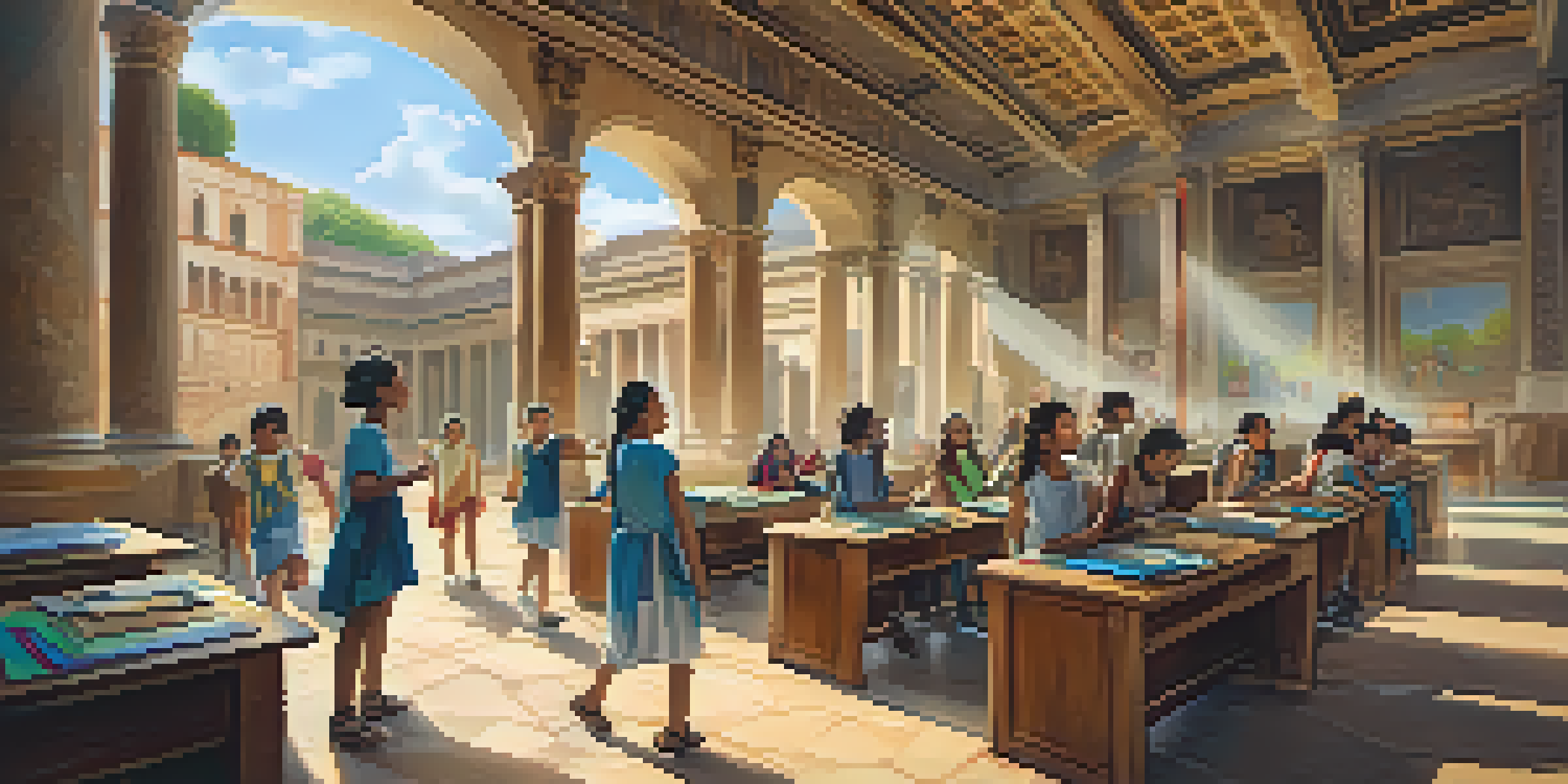Integrating Virtual Reality into Curricula for Deeper Learning

Understanding Virtual Reality in Education
Virtual reality (VR) is an immersive technology that simulates real or imagined environments, allowing users to engage with content in a multi-sensory way. In education, VR transforms the traditional classroom, providing students with interactive experiences that can enhance understanding and retention. For instance, a history lesson can come alive as students walk through ancient Rome, experiencing its architecture and culture firsthand.
Benefits of VR for Deeper Learning
One of the prime benefits of integrating VR into curricula is the ability to promote experiential learning. When students participate in simulations, they not only absorb information but also apply their knowledge in realistic scenarios. This active engagement fosters critical thinking and problem-solving skills, making learning more meaningful and memorable.
VR Enhances Experiential Learning
Integrating VR in education promotes active engagement, allowing students to apply knowledge in realistic scenarios.
Enhancing Engagement Through Immersion
VR captivates students' attention in a way that traditional teaching methods often cannot. Immersive experiences can spark curiosity, encouraging students to explore topics more deeply. For example, a biology class can utilize VR to explore the human body at a cellular level, making the learning process not just educational, but fascinating.
Challenges of Implementing VR in Education
While the promise of VR is exciting, there are challenges that educators must navigate. High costs, limited access to technology, and the need for teacher training can hinder widespread adoption. However, as technology becomes more affordable and user-friendly, these barriers are gradually diminishing, opening doors for innovative teaching methods.
Overcoming VR Implementation Challenges
While costs and accessibility can hinder VR adoption, advancements in technology are gradually making it more feasible for schools.
Creating Inclusive VR Learning Environments
It's essential to ensure that VR experiences are accessible to all students, including those with disabilities. Adaptive technologies and thoughtful design can create an inclusive environment where every learner can benefit from VR. For instance, incorporating audio descriptions or haptic feedback can enhance the experience for students with visual impairments.
Integrating VR with Existing Curriculum
Successful integration of VR into curricula involves aligning it with educational standards and learning objectives. Educators can incorporate VR as a supplemental tool rather than a replacement for traditional methods. For example, using VR for field trips can enrich lessons in geography or science, providing a context that textbooks alone cannot offer.
Future of VR in Diverse Classrooms
As VR technology evolves, it holds the promise of creating more engaging and inclusive learning environments for all students.
Real-World Applications of VR in Classrooms
Many schools and universities are already reaping the benefits of VR. Programs like Labster allow students to conduct virtual science experiments, while platforms like Google Expeditions offer virtual field trips around the world. These practical applications not only enhance learning but also prepare students for a future where technology will play a pivotal role in various industries.
The Future of VR in Education
As VR technology continues to evolve, its potential impact on education is vast. Future developments may include more intuitive interfaces and even greater realism in simulations, making it easier for educators to integrate VR into their teaching. Ultimately, the goal is to create a more engaging and effective learning environment that meets the diverse needs of all students.